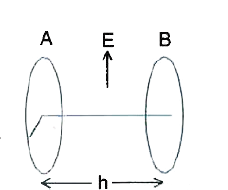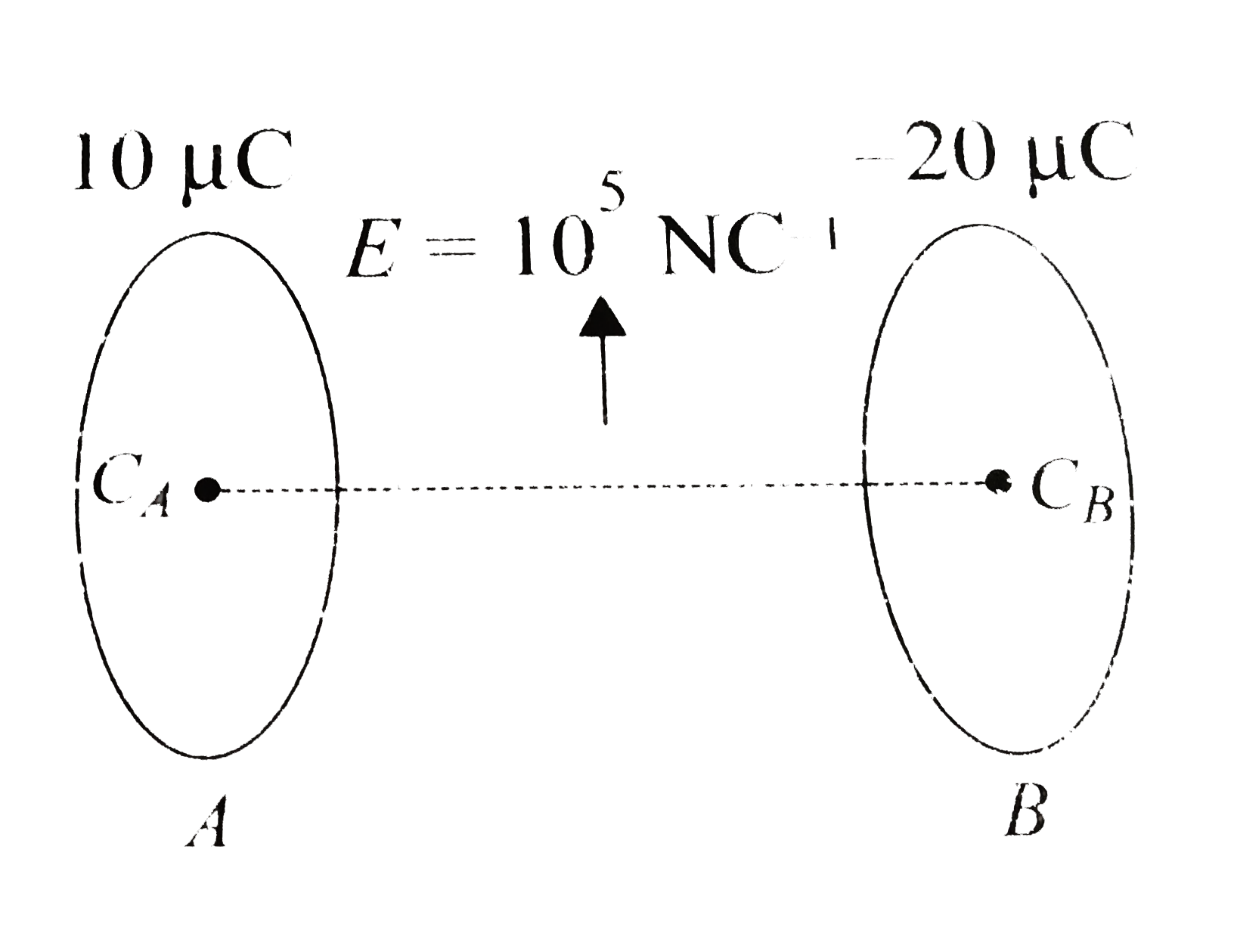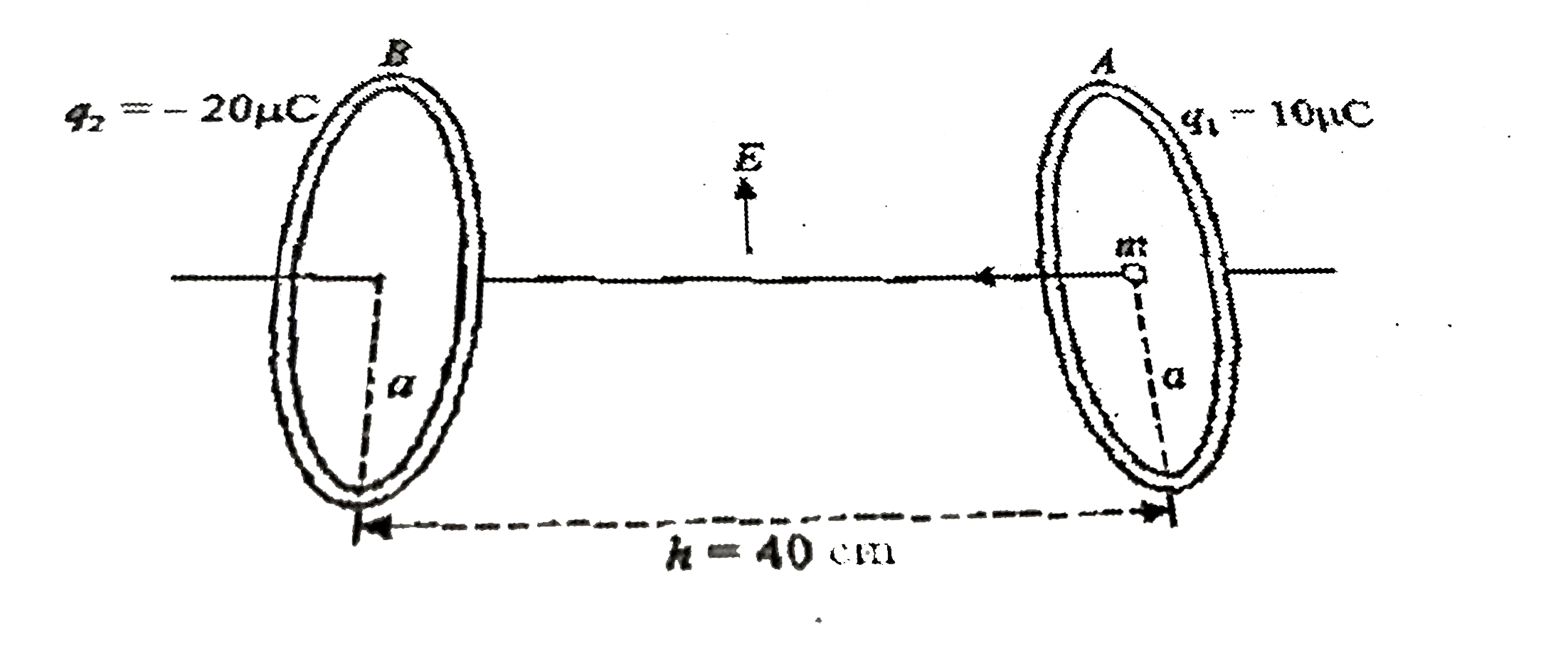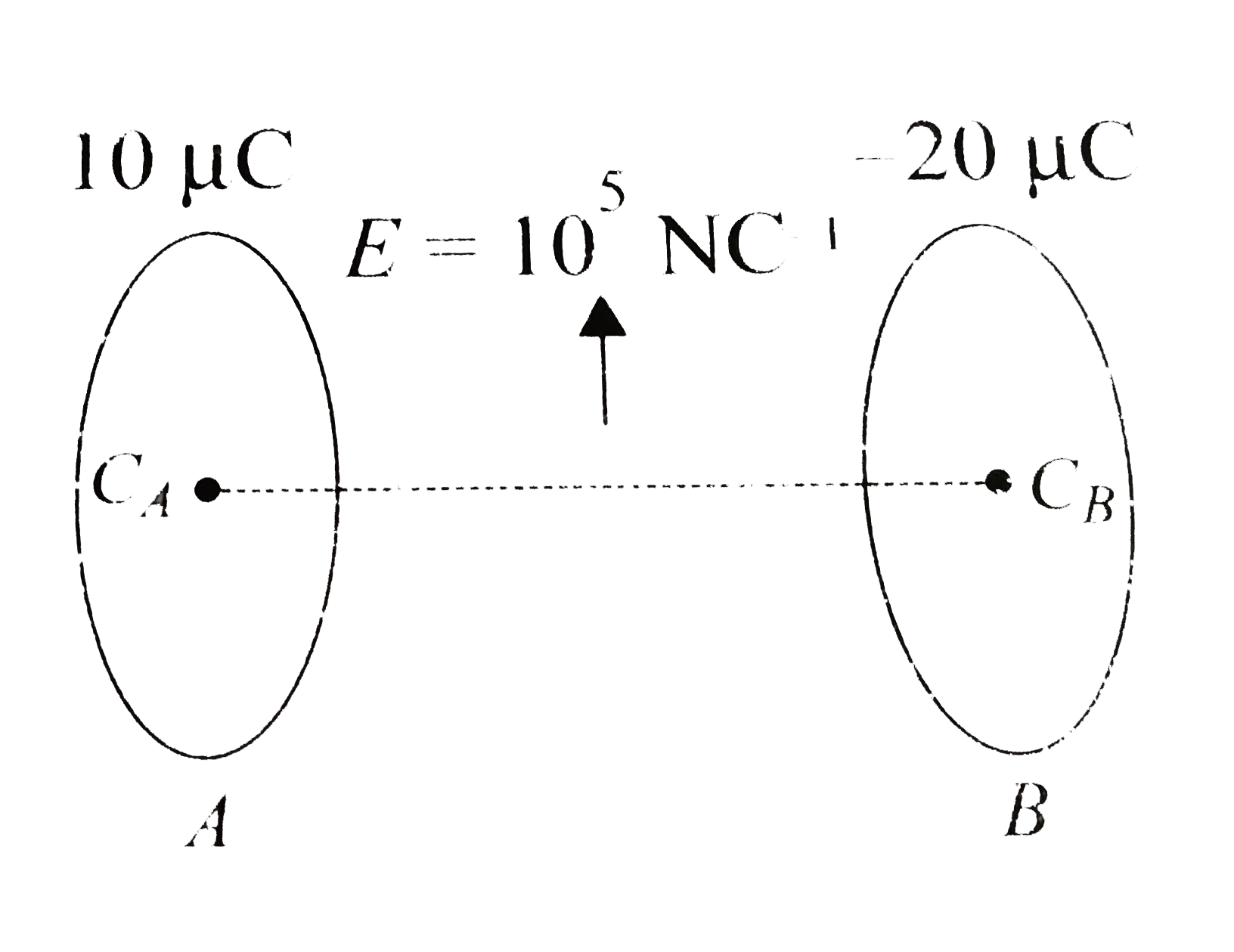
Two circular rings A and B each of radius 30 cm are placed coaxially with their axes horizontal in a uniform electric field E=105NC−1 directed vertically up. Distance between the centres of these rings is h = 40 cm. Ring A has a positive charge q1=10μC, while ring B has a negative charge of magnitude 20μC. A particle of mass m= 100 g and carrying a positive charge 104μC is released from rest at t=0 at the centre of the ring A. Find the velocity of the particle when it has moved through 40 cm? (g=10ms−2)
The correct Answer is:6√2ms−1
Topper's Solved these Questions
- ELECTRIC FIELD AND POTENTIALBOOK - AAKASH SERIESCHAPTER - ELECTRIC FIELD AND POTENTIALEXERCISE - PROBLEMS (LEVEL-I)
18 Videos
- ELECTRIC CHARGES AND FIELDSBOOK - AAKASH SERIESCHAPTER - ELECTRIC CHARGES AND FIELDSEXERCISE - Practice Exercise
57 Videos
- ELECTROMAGNETIC INDUCTIONBOOK - AAKASH SERIESCHAPTER - ELECTROMAGNETIC INDUCTIONEXERCISE - Additional Exercise
10 Videos
Similar Questions
Two circular rings A and B each of radius a=30cm are placed co-axially with their axes horizontal in a uniform electric field E=105N/C directed vertically upward as shown in the figure. The distance between the centers of these rings A and B is h=40cm. Ring A has a positive charge q1=10μC while ring B has a negative charge of magnitude q2=20μC. A particle of mass m = 100 gm and carrying a positive charge q=10μC is released from rest at the centre of the ring A. Calculate its velocity when it has moved a distance 40 cm.

View SolutionTwo identical circular rings A and B of radius 30 cm are placed coaxially with their axes horizontal in a uniform electric field E.=105N/C directed vertically upward as shown in figure. Distance between centres ofthese rings A and B is40cm. Ring A has a positive charge 10μC while ring B has a negative charge of magnitude 20μC. A particle of mass 100g and carrying a positive charge 10μC is released from rest at the centre of the ring A. Calculate its velocity when it has moved a distanceof40cm. Take g=10m/s2

[6√2m/s]
View Solution
Knowledge Check
Two circular rings A and B each of radius a = 30 cm are placed coaxially with their axis horizontal in a uniform electric field E=105NC−1 directed vertically upward as shown in figure. Distance between centers of the rings A and B (CAandCB)is40cm. Ring A has positive charge qA=10μC and B has a negative charge qB=−20μC. A particle of mass m and charge q=10μC is released from rest at the center of ring A. If particle moves along CACB, then

Speed of particle when it reaches at center of B isA6√2m/sB12√2m/sC2√6m/sD4√6m/sTwo circular rings A and B each of radius a = 30 cm are placed coaxially with their axis horizontal in a uniform electric field E=105NC−1 directed vertically upward as shown in figure. Distance between centers of the rings A and B (CAandCB)is40cm. Ring A has positive charge qA=10μC and B has a negative charge qB=−20μC. A particle of mass m and charge q=10μC is released from rest at the center of ring A. If particle moves along CACB, then

Work done by electric field, when particle moves from CA→CB isA−1.2JB1.2 JC−3.6JD3.6JTwo thin wire rings each having a radius R are placed at a distance d apart with their axes coiciding. The charges on the two rings are +q and −q. The potential difference between the centres of the two rings is
A(a) q2π∈0[1R−1√R2−d2]B(b) qR4π∈0d2C(c) q4π∈0[1R−1√R2+d2]D(d) zero
Two circular rings A and B each of radius a = 30 cm are placed coaxially with their axis horizontal in a uniform electric field E=105NC−1 directed vertically upward as shown in figure. Distance between centers of the rings A and B (CAandCB)is40cm. Ring A has positive charge qA=10μC and B has a negative charge qB=−20μC. A particle of mass m and charge q=10μC is released from rest at the center of ring A. If particle moves along CACB, then

Speed of particle when it reaches at center of B is
View SolutionTwo circular rings A and B each of radius a = 30 cm are placed coaxially with their axis horizontal in a uniform electric field E=105NC−1 directed vertically upward as shown in figure. Distance between centers of the rings A and B (CAandCB)is40cm. Ring A has positive charge qA=10μC and B has a negative charge qB=−20μC. A particle of mass m and charge q=10μC is released from rest at the center of ring A. If particle moves along CACB, then

Work done by electric field, when particle moves from CA→CB is
View SolutionTwo circular rings A and B, each of radius a = 30cm, are placed coaxiallywith their axes vertical as shown in figure−1.456. Distance between centres of these rings is h=40cm. Lower ring A has a positive charge of 10μC, while upper ringB has a negative charge of 20μC. A particle of mass m=100 gm carrying a positive charge of q=10μ C is released from rest at the centre of the ring ltbergt (a) Calculate initial acceleration of the particle.
(b) Calculate velocity of particle when it reaches at the centre ofupper ring B. (g=10ms−2)

View SolutionTwo thin wire rings each having radius R are placed at distance d apart with their axes coinciding. The charges on the two are +Q and −Q. The potential difference between the centre so the two rings is
View SolutionTwo thin wire rings each having radius R are placed at distance d apart with their axes coinciding. The charges on the two are +Q and −Q. The potential difference between the centre so the two rings is
View Solution
